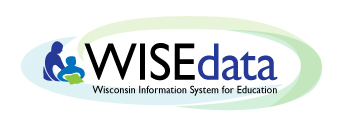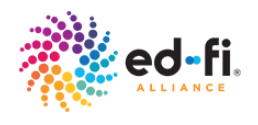Overview
Wisconsin Department of Public Instruction’s (DPI) WISEdata project aims to improve the collection of required state and federal data. The WISEdata Ed-Fi Integration project replaces individual legacy collection systems (ISES, CWCS, SAFR, etc.) with a cohesive interoperability collection framework. DPI has chosen the Ed-Fi interoperability framework to facilitate collecting local education agency (LEA) information. This framework needs to be implemented (if it is not already) by the LEA’s student information system (SIS), financial data system, and other technology providers. The vendor's system will push data to DPI via an application programming interface (API) defined by the Ed-Fi framework.
Working with Wisconsin's DPI to begin integrating your system with the WI DPI Ed-Fi REST API isn't difficult. Our goal is to make this process as easy as possible to minimize development costs and to decrease time to market.
The Wisconsin Department of Public Instruction would like to set vendors up as a certified vendor to enable school districts, charter schools, and private schools participating in a parental Choice program to submit data to DPI. DPI works one-on-one with vendors to prepare for certification of their respective systems.
How to Become a Vendor
At DPI, we value our vendor relationships and endeavor to make onboarding as straightforward as possible. First, complete the the New Vendor Application and review the vendor onboarding process steps.
-
Vendor Onboarding Process
If you are a new vendor, please review our process for onboarding new vendors:
-
New Vendors must complete the New Vendor Application between July 1st and October 31st to be considered for the next school year.
-
Vendor follow up and interview meetings must be completed by December 1st.
- Vendor selections are made by January 10th.
- Vendor integration testing planning and requirement training meetings are conducted by February 28th.
- Vendor integration testing is performed between April - July.
- Certified vendors are announced and available in the Ed-Fi Credential application by July 31st.
Additionally, the following prerequisites should be met prior to contacting Wisconsin's DPI:
-
Review Ed-Fi technical documentation to understand the foundation of this project.
-
Obtain an Ed-Fi license. This is not required, but it is highly recommended.
- Ensure programmers are familiar with RESTful services and basic HTTP authentication.
Once prerequisites are met, the following steps should be taken:
-
Contact Wisconsin's DPI to onboard.
-
Obtain a UAT 'Sandbox' WAMS ID and provide the user ID to the individual at WI DPI responsible for your onboard process. This will be used to provide access to the Ed-Fi credential application. This application is required to obtain credentials to connect to the API UAT 'Sandbox' and use Swagger.
- Download and review the 'Development Resources' and other documentation available below.
- Develop your application code using the use cases provided in the 'Development Resources', execute unit testing and system testing, and resolve errors that are easier to detect before proceeding with integration testing.
- Schedule a certification session with Wisconsin's DPI.
- For more information about certification and integration testing, see the Testing and Certification Resources listed below.
- Once vendors are Wisconsin's DPI certified, they will be eligible to receive production credentials after an LEA adds them as an authorized vendor.

